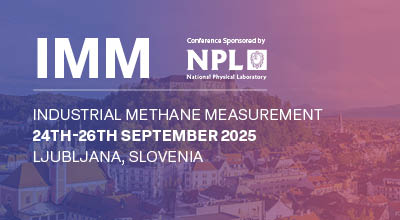| Abstract Title: | Gas leak detection and methane source attribution with a portable Battery-powered Cavity Ring-Down Spectrometer |
| Presenter Name: | Mr Renato Winkler |
| Co-authors: | Ms Iva Urbanova Mr Vladimir Onderka Mr Florian Dietrich Prof Jia Chen Mr Hossein Maazallahi Dr Magdalena Hofmann Mr Frantisek Moulis Mr Martin Chladil Mr Thomas Roeckmann Mr Hugo Denier van der Gon |
| Company/Organisation: | Picarro |
| Country: | Netherlands |
Abstract Information :
Atmospheric methane (CH4) has a strong short-term global warming impact and is emitted from a variety of natural and anthropogenic sources. Methane sources include wetlands, landfills, oil / gas / coal extraction activities, and urban emissions from traffic and the natural gas distribution system. Characterizing the magnitude and the origin of these fugitive emissions spatially and temporally is critical to reduce natural gas leakage and to understand their present and future climate impacts.
Here we present two case studies on the application of a portable Battery-powered Cavity Ring-Down Spectrometer (CRDS), the Picarro G4302, that can be used for mobile, continuous measurements of methane and ethane concentrations. The methane/ethane ratio is a powerful tool to detect gas leaks from fossil energy production or use since ethane is emitted alongside with methane as it is present in the raw natural fossil gas. Thanks to the compact and light-weight design the Picarro G4302 can be carried by the operator as a backpack allowing high precision measurements in industry and research locations far of the electrical grid. Also, a GPS unit allows to track the location of the measurements facilitating data interpretation.
In the first case study, the G4302 was used to detect leaks from a natural gas storage site. The methane measurements were compared with a simple hand-held device, a Detector Pac-Infrared gas analyzer (DP-IR). The results from both analyzers were in good agreement but the resolution of the G4302 is about 2 orders of magnitude higher than the DP-IR analyzer allowing to detect far smaller gas leaks. Also, the simultaneous determination of the ethane concentration can help to distinguish between natural gas leaks and other biogenic methane sources.
In the second case study, we used the portable CRDS instrument to detect and quantify methane leaks from a temporary gas infrastructure during the Oktoberfest in October 2018 in Munich, Germany. The analyzer was tested for both mobile and stationary measurements. For the mobile application, the measurements were carried out while walking around the Oktoberfest to find hotspots and attribute sources (e.g. wastewater, gas pipe leakage, or leakage from gas grills). For the stationary application, the analyzer was used for measurements downwind of the Oktoberfest area (Theresienwiese) where it was used in combination with solar-viewing FTIR measurements downwind and upwind of the Theresienwiese. The results show that the Theresienwiese is a methane point source during the Oktoberfest. We will discuss the elevated methane data considering the different anthropogenic sources within Munich.

